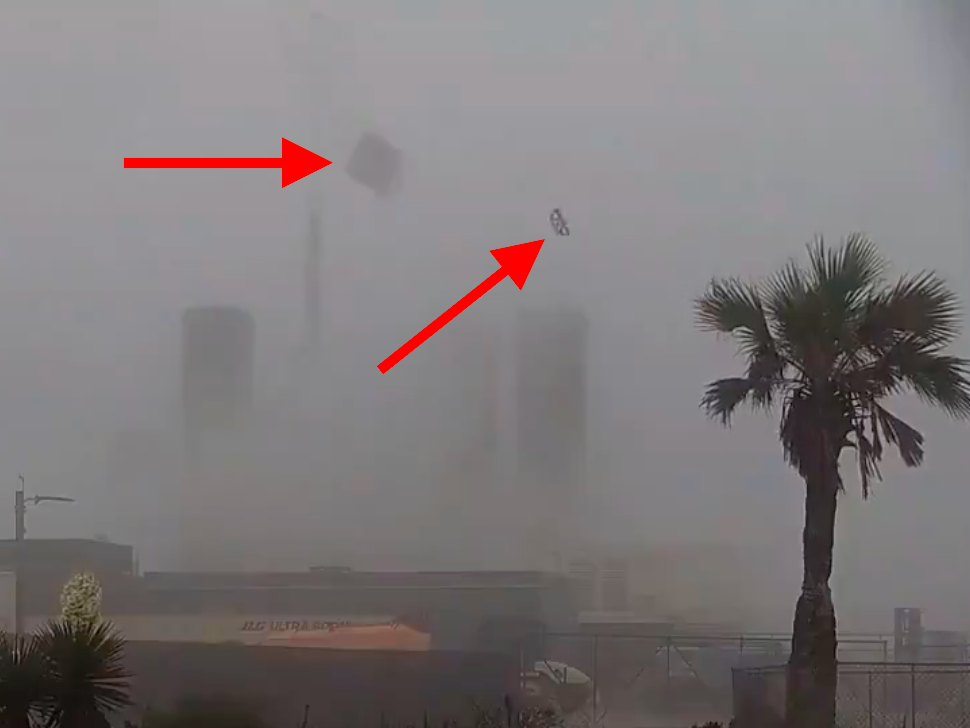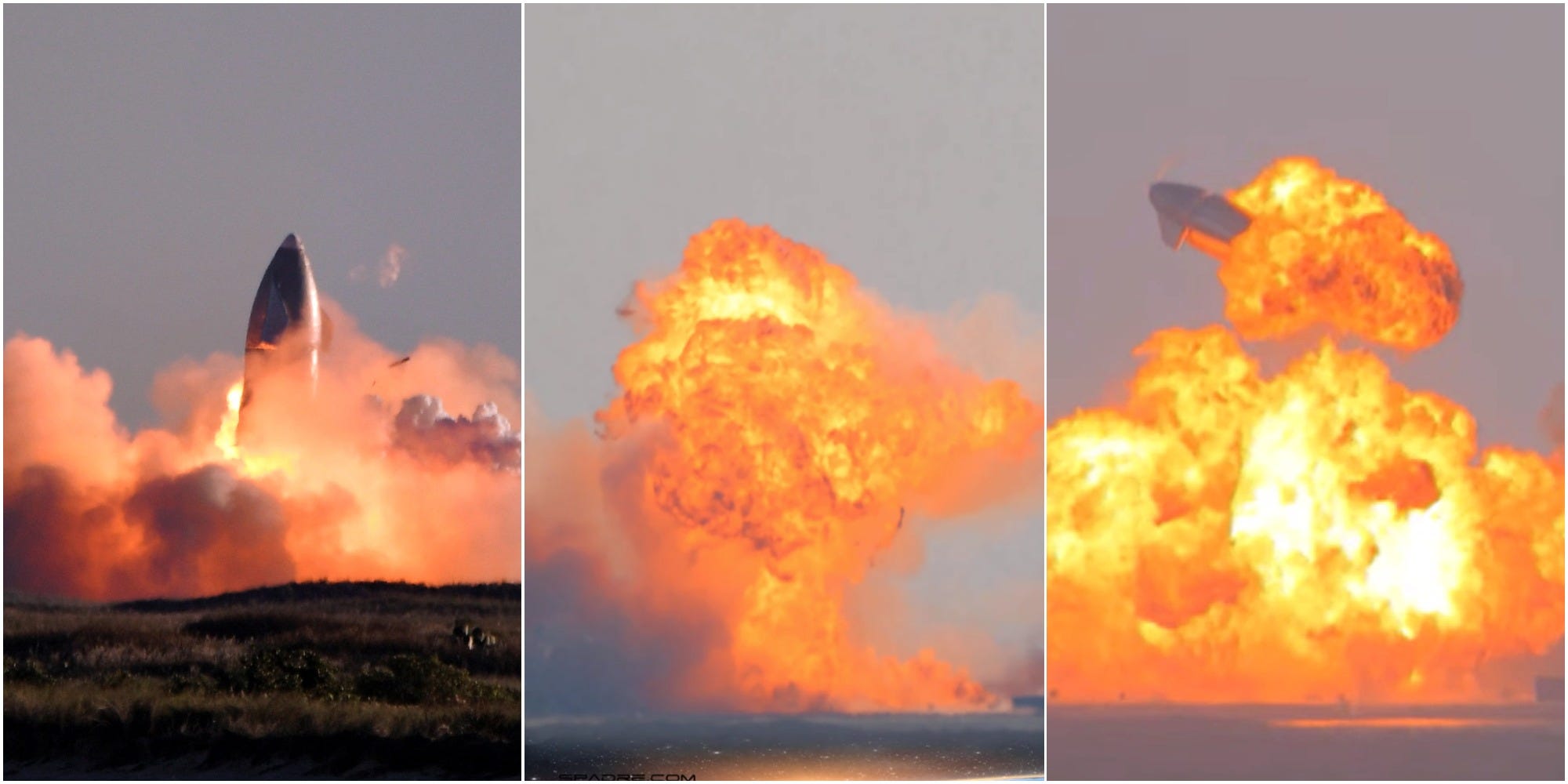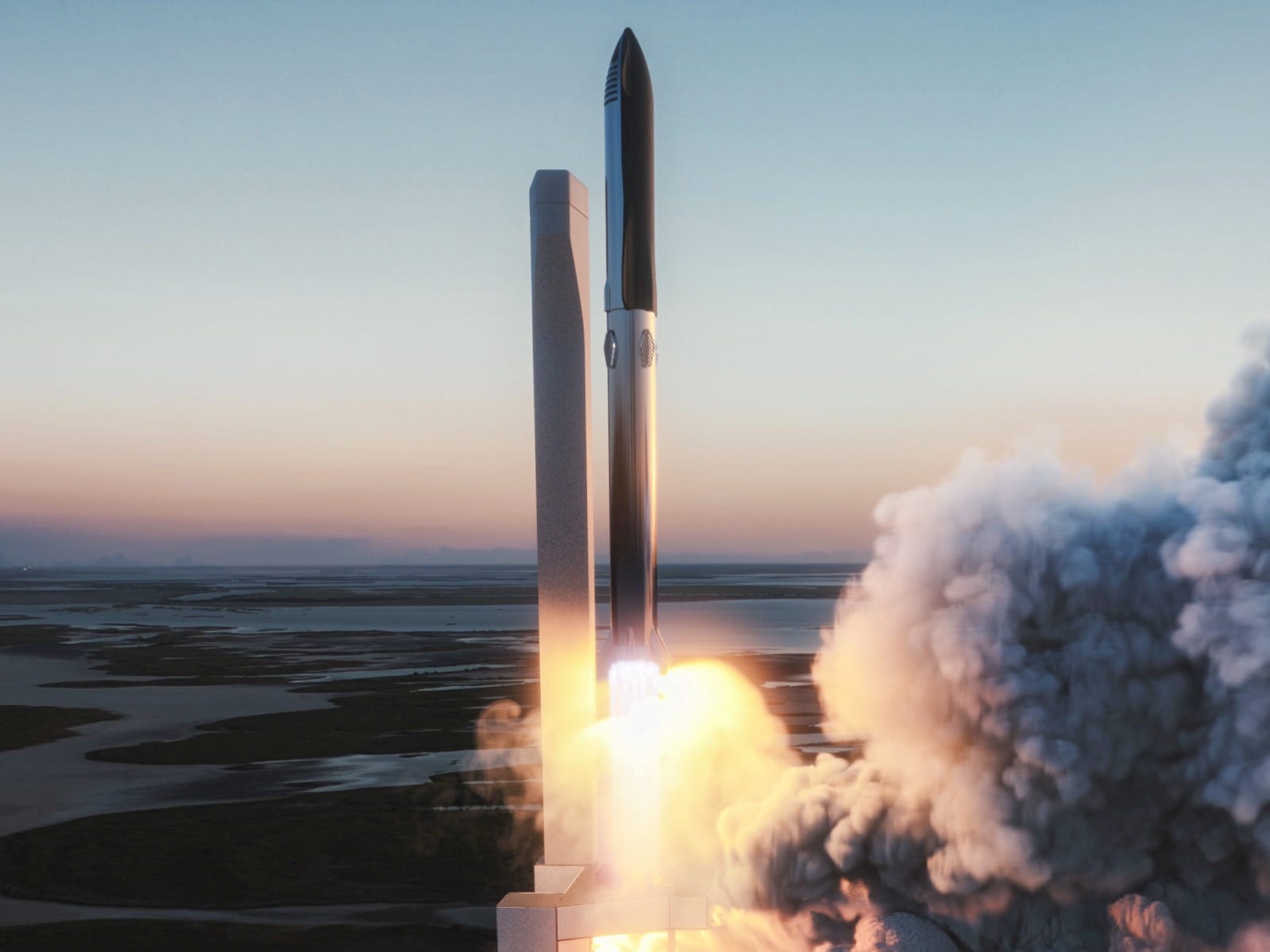
NASA Spaceflight
- SpaceX launched a prototype of its Starship rocket 6 miles above Texas on Tuesday morning.
- The rocket, called SN11, crashed while landing. Debris scattered everywhere.
- This is the fourth time a Starship prototype was destroyed during a test flight.
- Visit the Business section of Insider for more stories.
SpaceX's latest Starship rocket prototype once again failed to finish its test flight in one piece.
This version of the vehicle, called Starship serial No. 11, or SN11, sent debris raining down during an unsuccessful landing attempt on Tuesday morning. It's not yet clear whether the rocket blew up in the air during its descent, or whether it exploded upon touching the landing pad.
Starship heaved itself off the launchpad at 8 a.m. local time, launching 6 miles into the skies above Texas. As it approached the peak of its flight, the 16-story rocket shut off two of its three truck-sized Raptor engines. It hovered at 33,000 feet, then cut the final engine, tipped sideways, and plunged back to Earth.
As it neared the ground, the rocket was supposed to reignite its engines to flip upright and land gently. Instead, its onboard cameras froze after the engine ignition sequence. Because of a thick fog in Boca Chica, Texas, it was impossible to see SN11 as it approached the landing pad.
SpaceX's live feed of the launch cut out after 5 minutes and 49 seconds of footage.
-SpaceX (@SpaceX) March 30, 2021
A live feed from NASASpaceflight shows debris falling around the launchpad, presumably from the rocket.
While the rocket landed too hard, and possibly already in pieces, it did reach the correct spot: "At least the crater is in the right place!" Elon Musk, SpaceX's founder, tweeted on Tuesday.
-IndSamachar News (@Indsamachar) March 30, 2021
"Something significant happened shortly after landing burn start," Musk tweeted. "Should know what it was once we can examine the bits later today."
He added that it seemed like one of the engines had issues on the rocket's ascent.
The launch was SpaceX's fourth Starship prototype flight attempt since December. The Starship prototype that launched prior to this one, called SN10, stuck the landing at first after its flight earlier this month, but it exploded 10 minutes later. The two before that, SN8 and SN9, both crashed immediately and blew up.

Gene Blevins/Reuters; SPadre.com
SpaceX will have to master landing the Starship - without any explosions, immediate or delayed - in order to achieve founder Elon Musk's goal of building the world's first fully reusable launch system.
SpaceX has started building the booster designed to carry Starship to orbit
The Starship prototypes SpaceX is launching are meant to be the upper stage of a two-part system. Eventually, a roughly 23-story booster called Super Heavy would heave the Starship spaceship toward orbit.
SpaceX began assembling its first prototype of that booster at its Texas facilities in mid-March. Musk said this version of Super Heavy is just for production testing, though the next prototype should fly.
To grasp the size of this launch system, look for the person standing on the lift in this photo Musk shared on Twitter. Then imagine Starship sitting on top of that booster.
Musk wants the Starship-Super Heavy system to one day fly astronauts to the moon and power hypersonic travel on Earth. Ultimately, he has said, he plans to build 1,000 Starships in order to carry people and cargo to Mars and establish a settlement there.
Making Starship-Super Heavy reusable could slash the cost of reaching space 1,000-fold. Its enormous size would allow it to carry large payloads to space, including tens of thousands of Starlink internet satellites that SpaceX plans to put into orbit.
In short, this is the launch system on which SpaceX is staking its future. But there are several hurdles to clear before it can reach space.
Environmental reviews could slow Starship's journey to orbit

SpaceX
In addition to landing Starship prototypes without blowing them up, SpaceX will need to integrate the Super Heavy booster with the spaceship, learn to launch the two parts together, and show it can land the booster in one piece.
The company will also need to rocket a Starship into orbit to test its ability to reenter Earth's atmosphere. That will require a new type of launch license from the Federal Aviation Administration, but obtaining it requires clearing many regulatory hurdles, including a thorough environmental assessment. Depending on the findings of that assessment, it's possible SpaceX may need to conduct a new environmental impact statement, which could take up to three years.
Complicating matters is a leaked FAA draft document obtained by Insider that revealed SpaceX's plans to dig natural gas wells and build gas-fired power plants in Boca Chica. Such plans could prolong SpaceX's environmental review process.
Musk, however, has said he is "highly confident" SpaceX will launch an uncrewed Starship to Mars in 2024, followed by a crewed mission in 2026.